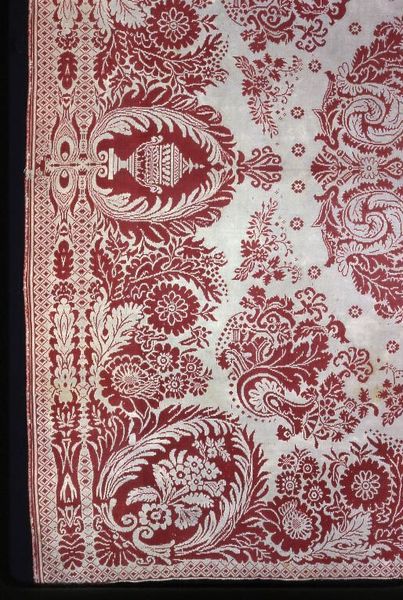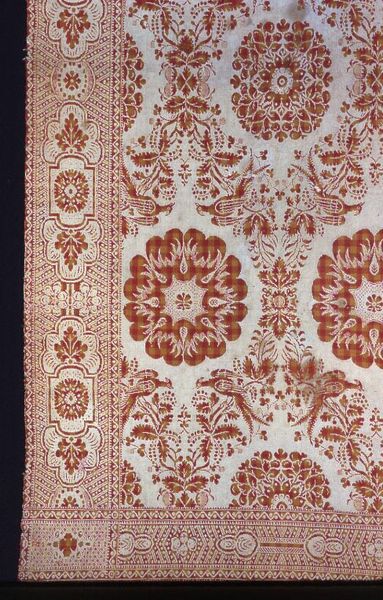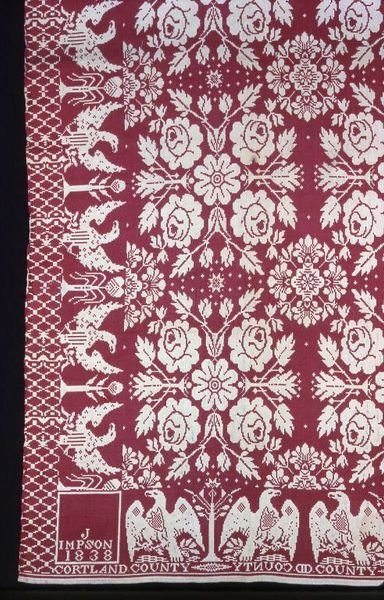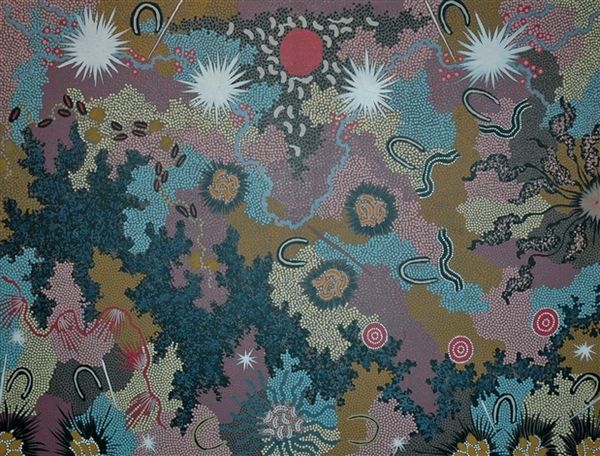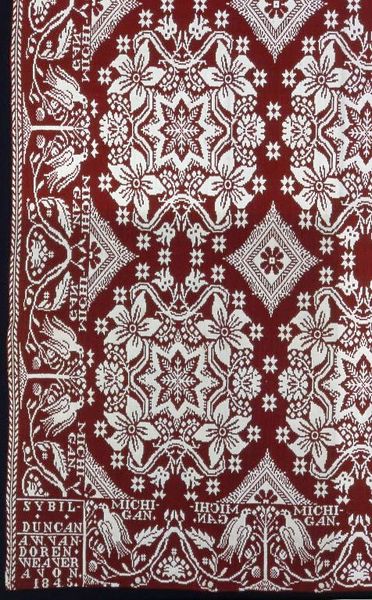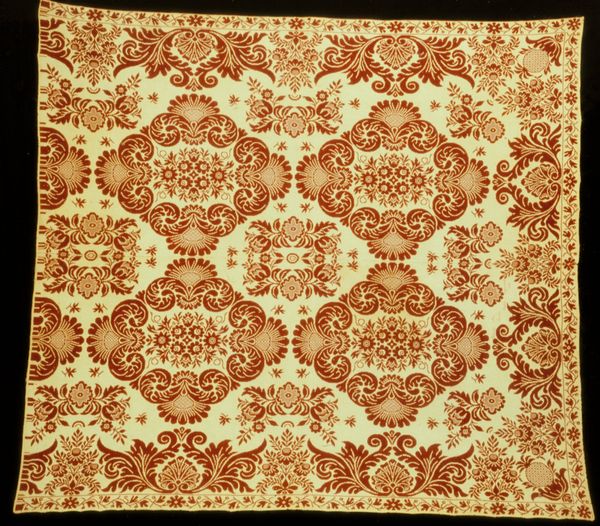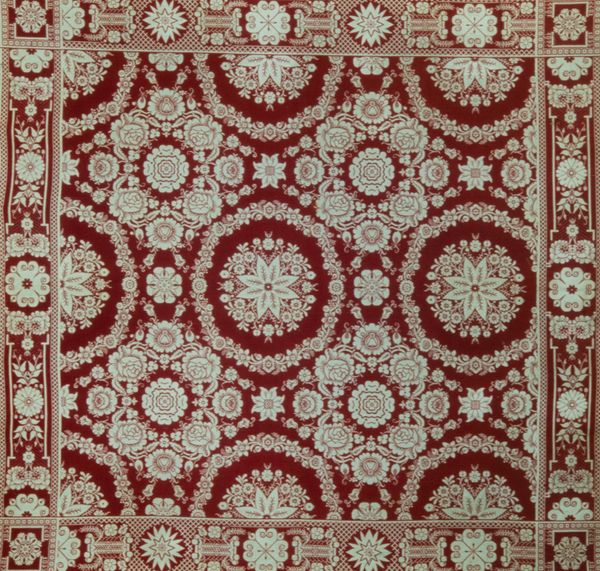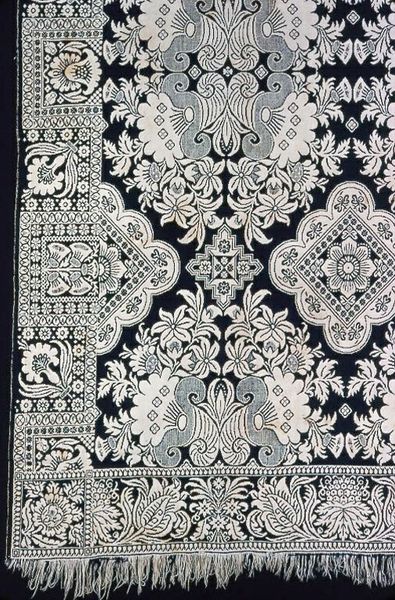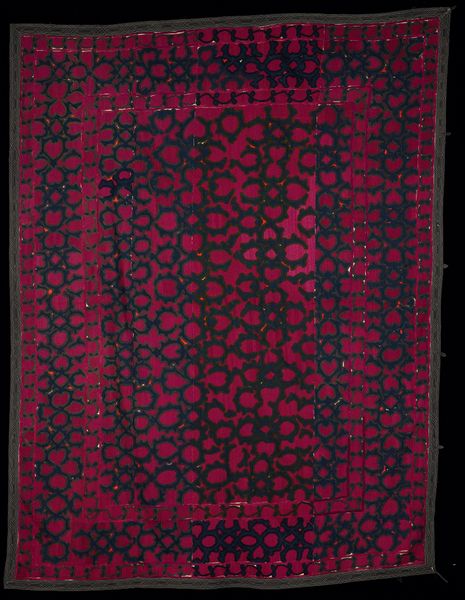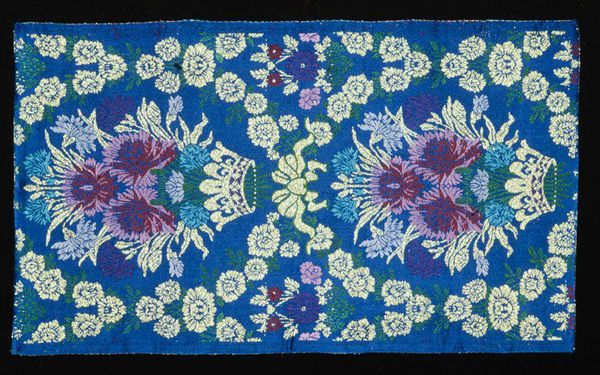
weaving, textile
#
weaving
#
textile
#
folk-art
#
organic pattern
#
geometric
#
pattern repetition
Dimensions: 231.5 × 206 cm (91 × 81 in.)
Copyright: Public Domain
Editor: This object is a woven wool coverlet, crafted in 1849 by J. van Ness. The deep red and contrasting white patterns give it a striking, almost graphic quality. It feels very… handmade. What can you tell me about it? Curator: For me, the coverlet opens a window onto 19th-century American textile production. Think about the labor involved in its creation. The wool had to be sourced, spun, dyed, and then meticulously woven. We have the location it was woven in - Palmyra, NY, likely from the worker's home, highlighting a connection between domesticity and the early textile industry. How does the choice of materials – the wool, the dye – affect our understanding of the artwork? Editor: I hadn't considered the wool itself as significant. Does its coarseness or fineness tell us something about the maker's access to resources or even their social standing? Curator: Precisely. The type of wool, the complexity of the weave, the fastness of the dye, all speak to the maker's skill, resources, and even their intended market. The "E Pluribus Unum" motif and American Eagle - what can they tell us about the customer buying this artwork, its market? How can we link this visual and textile materiality with consumerism? Editor: It makes me consider its functionality too. Was it meant to be used daily or was it kept only for display, making it art for the home? Curator: And how does that shift our understanding of its value, both monetary and cultural? Think about how weaving and textiles were often dismissed as 'craft' rather than 'high art.' This challenges the way those old lines were drawn, doesn't it? How does focusing on the process of production transform how we engage with the image? Editor: It does. Seeing it this way helps me think about the artist differently too. Thank you, this changed how I'll look at textiles moving forward! Curator: Indeed! By acknowledging its production and maker we resist seeing it solely as an aesthetic object and recognize the complex web of labor, skill, and societal context embedded within it.
Comments
No comments
Be the first to comment and join the conversation on the ultimate creative platform.



